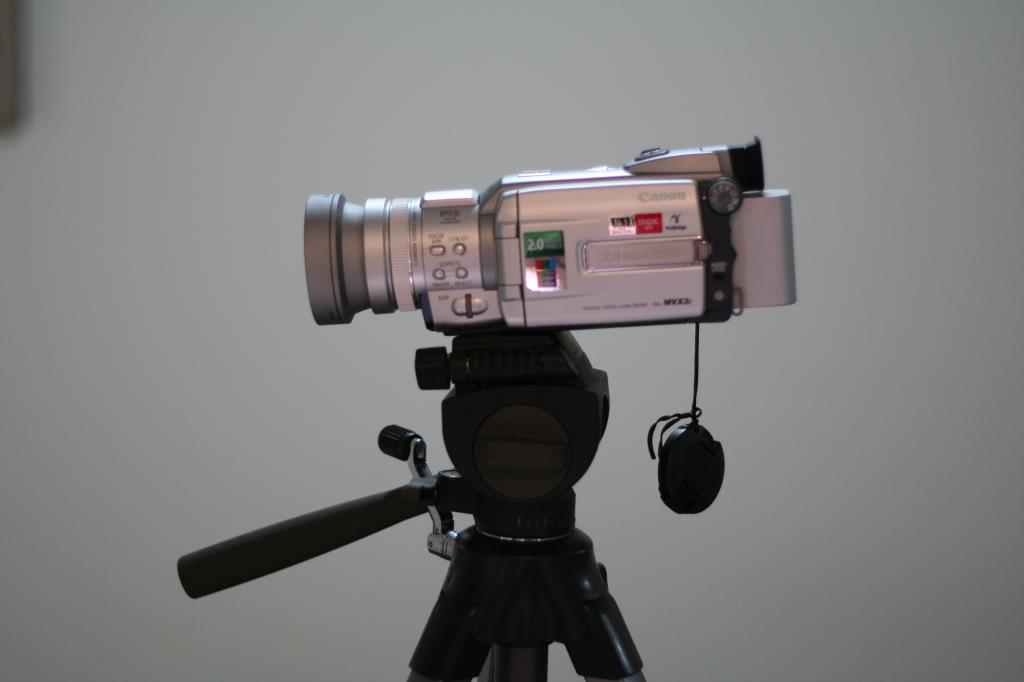Lights! Camera! Action!

Being able to watch video footage of yourself as well as top level players is a very useful way of increasing the amount of training you can get done. Even when your body is worn out from physical training, you can flop down into your favorite easy chair and do some more training – doing video analysis of your ping-pong game.
Using Video Footage to Analyze Your Table Tennis Game
If you have access to a video camera, being able to watch and study your own play is a sure way to improve your level. But don’t just sit there like you are watching the late night news – you need to be paying close attention to get the most out of your time. Here’s a few tips to help you get the full benefit of your videos.
- Try to get hold of recent footage. Your game will develop and change over time, as you continue to play. You want to see what you are playing like now, not what you doing last year.
- We all have a picture in our head of what we think we play like. Compare this picture to what you are actually seeing on the screen. What are the differences? What things are you doing better than you thought, and what things are you doing worse?
As an example, the first time I saw myself on video, it was immediately obvious that I was playing from a fairly upright stance, instead of the crouch that I thought I was using. You can’t argue with the videotape, so I had to face the facts and get to work on lowering my stance.
- Don’t forget to acknowledge the things that you are doing correctly. This is good mental positive reinforcement, and can also be handy down the track if you notice that you have developed a bad habit.
- Make a written checklist of your strengths, weaknesses and in between areas. Then you will know what to look for when watching future videos, and you can also compare previous results to see how your game is developing.
Here are a few basics to add to your checklist:
- Length of serves, good percentage of service winners or third ball attack setups
- Placement of serve returns, high percentage of successful service returns
- Crouched stance with feet in optimum position
- Smooth recovery to ready position
- Stroke technique OK
- Balance during strokes OK
- Few unforced errors
- Placement of attacks – to playing elbow of opponent or away from power zones
- Any old bad habits creeping back into your game?
- When watching the video, check your body language and facial expressions – what message are they sending your opponent? Make sure you are looking like a winner all the time.
Using Table Tennis Footage to Analyze Your Opponents
I have written at length about how to scout your table tennis opponents, and the use of video footage can be very useful for really putting your opponents under a microscope. Make use of it whenever you can.
A further suggestion would be to pretend that you are one of your opponents, and scout yourself. Remember, what you are viewing on video is what your opponents are seeing about you. If you were one of your opponents, what plans would you be making to play yourself? Knowing what your opponents are likely to do against you is a big advantage when playing levels are close.
Using Table Tennis Footage to Analyze Top Players
Most ping-pong enthusiasts have watched videos of the top players at one time or another. Rather than just sitting back and putting your mind in neutral, engage your brain and really try to work out what is going on during the match.
- Think about what tactics are being used by both players. Try to work out when a player has changed tactics, and why he might have made the change. It’s easy to think a player who is losing has changed tactics because they are not working, but why has a player who is winning changed his plans?
- Try to get hold of footage of top players who play in a style similar to your own. Then run their game through your own checklist, and compare how they match up with your game. Look at their tactics and techniques, and see if you can work out why they are doing what they do. If you can’t figure it out, make a note to try it out for yourself the next time you get on the table, and see if you can learn something.
- Don’t just focus on the textbook technique of the pros – pay attention to the unconventional things too. Watch what they do to recover when put under pressure, and which things work and which don’t. At the professional level, there is not much room for anything which doesn’t work well, so what you are generally seeing is the result of a lot of refinement of techniques via hard work and the fires of competition.

